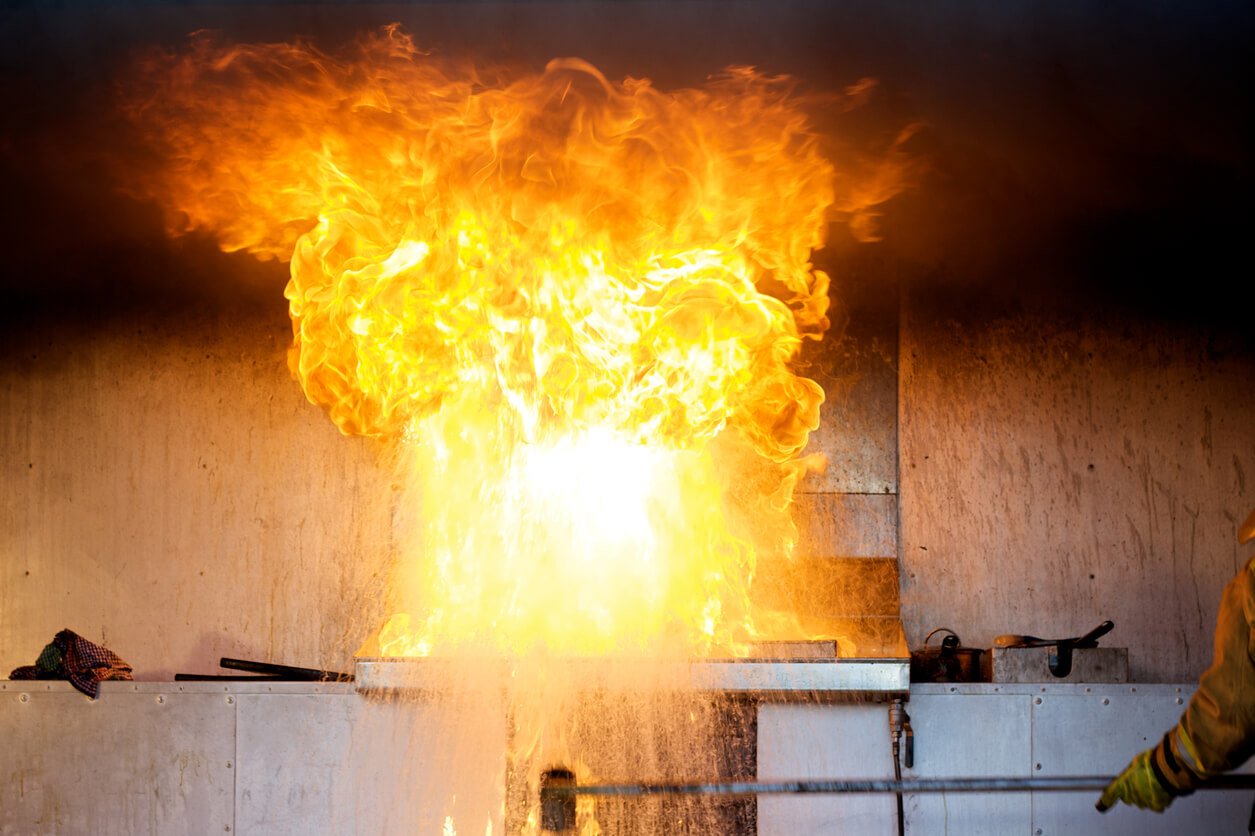What Are The Top Causes of Office Fires?
- Cooking Equipment
- Lighting and Electrical
- Heating Equipment
- Intentional Fires
- Smoking Materials
- Exposure
Fires tend to break out in office buildings for different reasons than they break out in homes or industrial settings. That means taking different steps to protect and prepare.
The good news for office managers and office workers is that far fewer fires break out in offices than in homes, warehouses, and factories.
But, office fires remain an important risk. According to the National Fire Protection Association’s report on fires in office properties, fires cause $112 million in damages per year in the United States.
As you explore the safety of your workplace, consider these six leading causes of office fires and how best to protect your business.
Top 6 Causes of Office Fires
Understanding the primary causes of office fires is crucial for implementing preventive measures and ensuring workplace safety. From electrical malfunctions to human error, these are the top factors contributing to the ignition and spread of fires within office environments.
1. Cooking Equipment
If your office wanted to conduct a fire drill based on a likely real-life scenario (which is a great exercise), a worker burning a bagel in the toaster and catching the room on fire would be a good scenario to practice.
Like home structure fires, most office fires start in the kitchen. Fortunately, most office kitchen fires don’t make it very far. Despite causing nearly one in three fires, cooking equipment causes only 6% of office fires that result in property damage.
How to Prepare:
Conduct fire extinguisher training, and practice correct fire extinguisher selection and placement. It’s an OSHA requirement and is essential if your employees are to be able to use extinguishers in a crisis
Research what type of fire extinguishers to install and where to install them. Fire extinguishers should be within 30 feet of stoves so they can be accessed quickly but not so close that smoke or flames could block access.
2. Electrical Distribution and Lighting Equipment
Lights and wires are silent risks that can cause destructive fires during hours when no one is around the office to stop the flames. Although they cause fewer fires than cooking equipment, electrical issues are responsible for a larger share of office fires that cause property damage.
How to Prepare:
Practice correct fire extinguisher selection (Class C for electrical fires), and consider getting a professional fire safety assessment of your building to determine how you can minimize your risks of an electrical fire.
3. Heating Equipment
Like electric systems, office furnaces and vents are silent threats that can spark fires if they’re not kept in good repair. Central heating systems are the most common type of heating system, responsible for more than half the office fires in this category. That’s a marked difference from home fires sparked by heating equipment, where space heaters are most often to blame, according to a different NFPA study.
How to Prepare:
Get a fire safety assessment, including a central heating inspection. A fire safety professional can identify heating systems that are at risk of causing fires, as well as factors that could exacerbate fires that do occur.
4. Intentional Fires
The NPFA report defines intentionally-set fires as those that were deliberately set, either by arson or human accidents such as children playing with matches.
In addition to being responsible for 1 in 10 office fires, intentionally-set fires were the single largest category of fires that resulted in property damage. Twenty percent of property-damage fires in offices were attributed to intentional fires.
Arson is an office manager's worst nightmare. While it might not be possible to predict when someone will commit a crime, office managers can lower the damage from unpredictable, intentionally set fires by ensuring fire protection systems are armed and ready.
How to Prepare:
Maintain the automatic sprinkler systems in the building. Automatic sprinklers are designed to put out all kinds of fires and can even stop fires deliberately set for malicious purposes. Passive fire protection—fire-smart building materials and design—can also help.
5. Smoking Materials
This category will likely shrink in future studies to reflect the fact that fewer jurisdictions today allow smoking in offices as compared to 10 and 20 years ago. As of November 2019, more than half of the U.S. states, along with numerous cities and counties, had enacted laws prohibiting smoking in workplaces. However, smoking materials such as hot ashes are still a leading cause of office fires, and should be addressed accordingly.
How to Prepare:
Review your office smoking policy and have a safety and evacuation plan. If your office allows smoking in designated areas, be sure to provide plenty of signs directing smokers to receptacles to dispose of hot ashes safely.
6. Exposure
Exposure is the spread of fire from an outside area to a structure. Office managers can’t do much to stop outside fires from spreading to their offices, however they can prepare for this type of fire and help to minimize the spread of the flames.
How to Prepare:
Passive fire protection is key. When building or remodeling an office, consider what could be done to slow the spread of the flames if a fire broke out. Also, ensure automatic fire sprinklers work and that employees know what to do if a fire spreads into the office.
Preventing Office Fires in Your Building
Regardless of whether the biggest threat to your particular office is burned toast, hot ash dumped in a trashcan, or an electrical short, scheduling a fire assessment is a great starting point to understanding your fire risks and how to minimize them.
The statistics described in this article outline the most common types of office fires in the United States. But, of course, specific fire hazards vary from office to office. A fire safety professional can help you identify the specific hazards in your environment, as well as the concrete steps you can take to lower your fire risks.
Editor's Note: This post was originally published on November 25, 2019, and has been updated for accuracy and current best practices.








